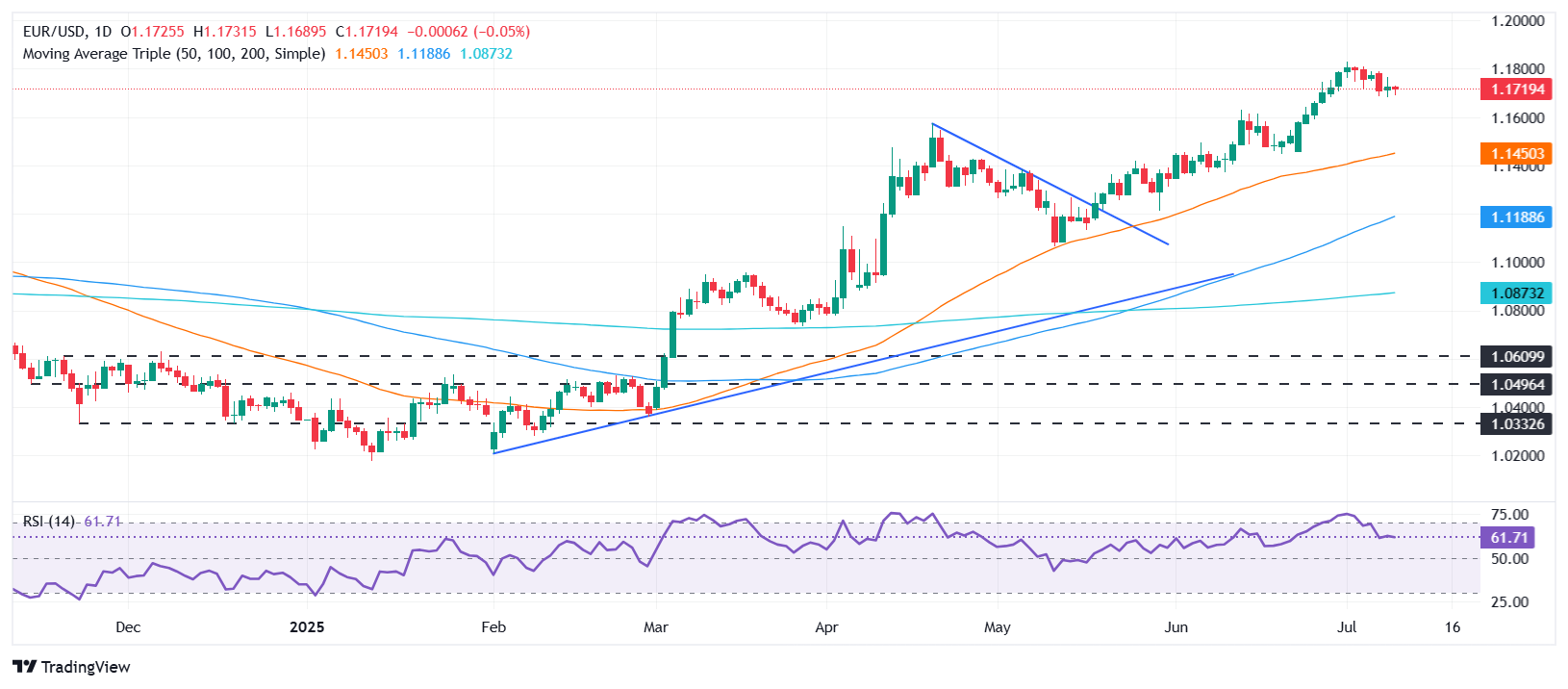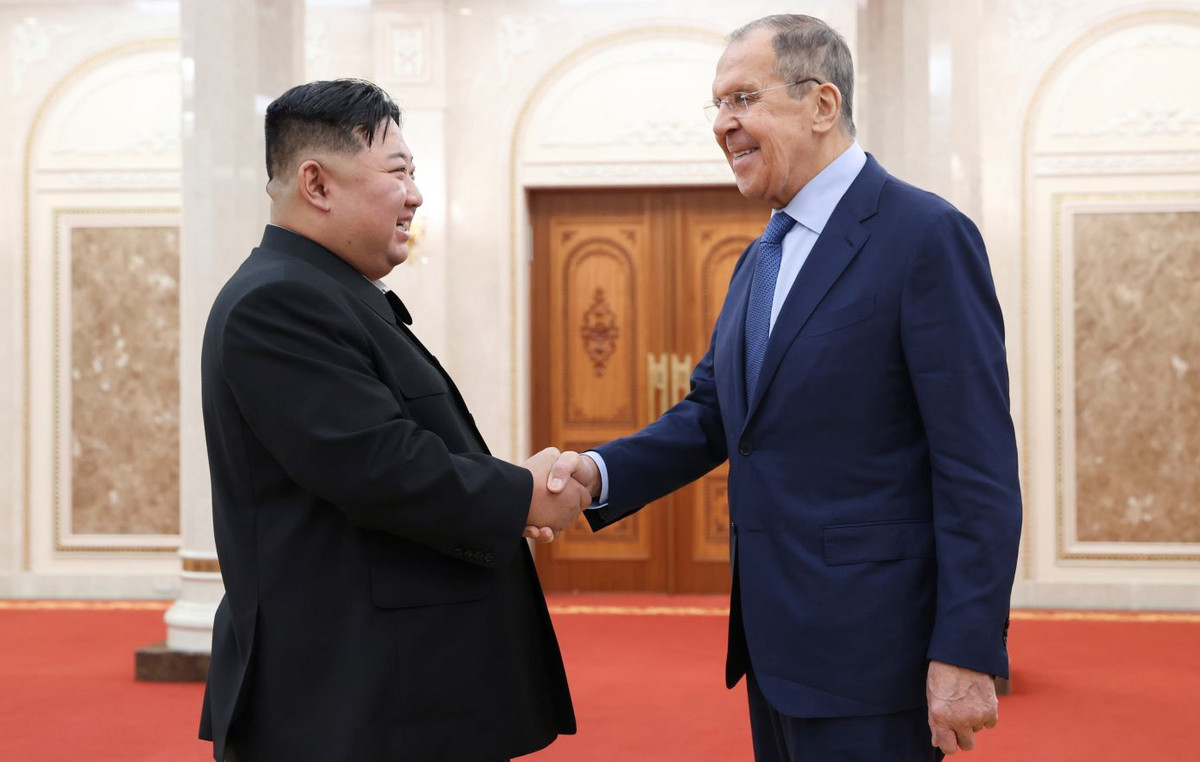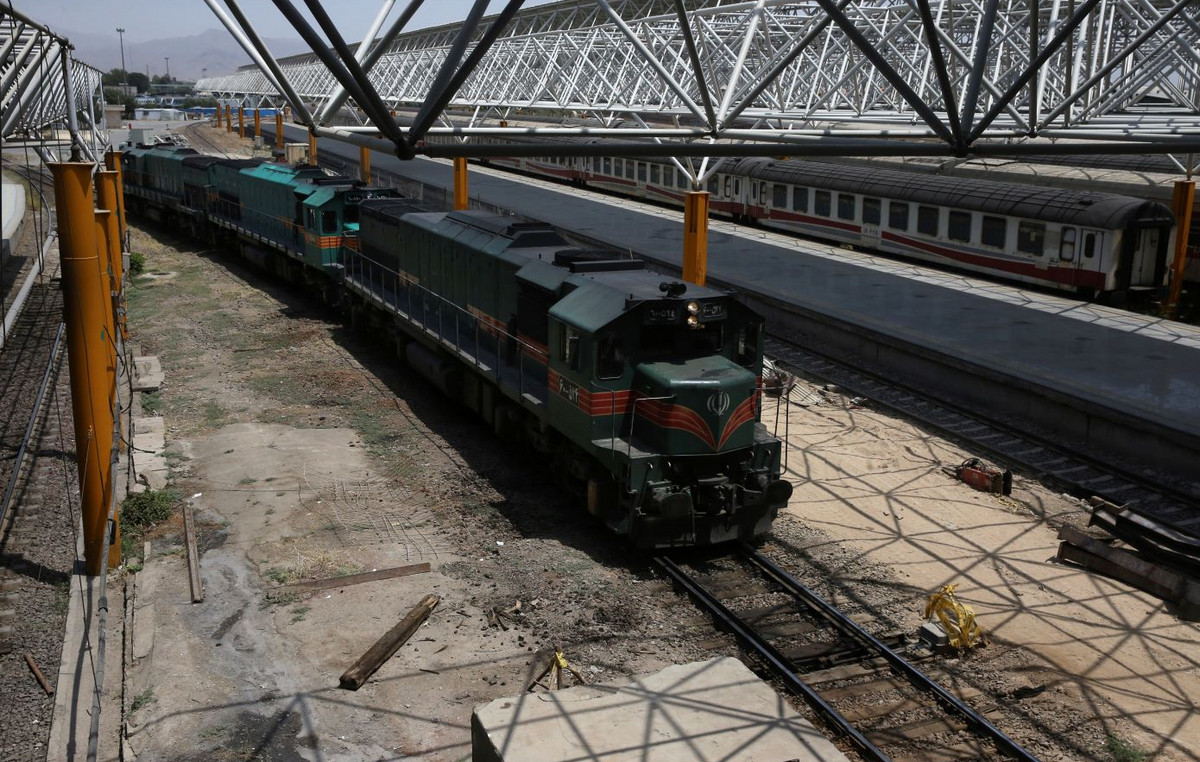- The euro remains about 1,1715 while the Fed Dovish tone compensates for renewed global tariff tensions.
- FOMC minutes show that most officials favor at least one cut this year.
- Some Fed members are open to a cut in July if the data supports it.
The EUR/USD ended Wednesday’s session with decent profits of more than 0.17% after the Federal Open Market Committee (FOMC) published the minutes of its June monetary policy meeting, which showed that some officials are considering at least one cut of interest rates. As the Asian session begins, the par is quoted at 1,1715, practically unchanged, at the time of writing.
The minutes of the Federal Reserve meeting revealed that the majority of those responsible for the policy see a rate cut later this year as an adequate option. At the same time, some officials indicated that a reduction as soon as in July could be justified, provided that the incoming data is aligned with their estimates.
Apart from this, Washington resumed sending tariff letters to the Philippines, Moldova, Algeria, Iraq, Libya, Brunéi, Sri Lanka and Brazil, with tariffs established in a range of 20% to 50%.
The euro fell despite the news that revealed that the White House did not sign up for the European Union (EU) with additional tariffs and that it could ensure some exceptions of the base rate of 10%.
What moves the market today: the euro is listed laterally while Fed minutes suggest only one rate cut
The dollar strength presses the EUR/USD. The US dollar index (DXY), which tracks the value of the dollar against a basket of six currencies, ended the session on Wednesday flat in 97.51.
Wednesday’s main engine is still commercial news. Washington revealed tariffs to the Philippines (20%), Moldova (25%), Algeria (30%), Iraq (30%), Libya (30%), Brunéi (25%), Sri Lanka (30%) and, finally, Brazil (50%).
Along with this, the market participants assimilated the latest FOMC minutes, who showed that some Fed officials do not see a rate cut in 2025. Citing that inflationary pressures remain high, along with the increasing inflation expectations and ongoing economic resilience. All participants considered that the current policy rate is appropriate. The participants agreed that the risks of stagflation have decreased, although they remain high.
Washington revealed tariffs to the Philippines (20%), Moldova (25%), Algeria (30%), Iraq (30%), Libya (30%), Brunéi (25%), Sri Lanka (30%) and, finally, Brazil (50%).
Trump added that it could have been harder in trade and announced that it would impose tariffs on pharmaceutical products, semiconductors and copper, which, he said, would result in tariffs of around 50%.
The EU declared that there have been some advances in a Marco Commercial Agreement with the United States (USA), according to EU spokesman Olof Gill. He indicated that Ursula von der Leyen held a call with Trump on Sunday, saying that “they had a good exchange.”
EURO TECHNICAL PERSPECTIVE: EUR/USD cling to 1,1700 while the pair is consolidated
The EUR/USD is listed laterally within the range of 1,1700-1.1720, with the operators still unable to break the key support in 1,1700. The relative force index (RSI) shows that buyers are still in charge but are losing some short -term impulse.
For an upward continuation, the EUR/USD must break 1,1720 before trying the maximum of July 7, 1,1789. The upper resistance is found in 1,1800 and the maximum of the year to date (YTD) of 1,1829.
On the contrary, if the EUR/USD falls below 1,1700, this will expose the simple mobile average (SMA) of 20 days as the first support level in 1,1649. A rupture of this last will expose the figure of 1,1600, followed by the 50 -day SMA in 1,1448.

EURO – FREQUENT QUESTIONS
The euro is the currency of the 19 countries of the European Union that belong to the Eurozone. It is the second most negotiated currency in the world, behind the US dollar. In 2022, it represented 31 % of all foreign exchange transactions, with an average daily business volume of more than 2.2 billion dollars a day. The EUR/USD is the most negotiated currency pair in the world, with an estimate of 30 %of all transactions, followed by the EUR/JPY (4 %), the EUR/GBP (3 %) and the EUR/AU (2 %).
The European Central Bank (ECB), based in Frankfurt (Germany), is the Eurozone reserve bank. The ECB establishes interest rates and manages monetary policy. The main mandate of the ECB is to maintain price stability, which means controlling inflation or stimulating growth. Its main tool is the rise or decrease in interest rates. Relatively high interest rates (or the expectation of higher types) usually benefit the euro and vice versa. The GOVERNMENT BOOK of the ECB makes decisions about monetary policy in meetings that are held eight times a year. The decisions are made by the directors of the National Banks of the Eurozone and six permanent members, including the president of the ECB, Christine Lagarde.
Eurozone inflation data, measured by the harmonized consumer prices index (IPCA), are an important economic indicator for the euro. If inflation increases more than expected, especially if it exceeds 2% of the ECB, it forces the ECB to rise interest rates to control it again. Relatively high interest rates compared to their counterparts usually benefit the euro, since they make the region more attractive as a place for global investors to deposit their money.
Published data measure the health of the economy and can have an impact on the euro. Indicators such as GDP, manufacturing and services PMIs, employment and consumer trust surveys can influence the direction of the single currency. A strong economy is good for the euro. Not only attracts more foreign investment, but it can encourage the ECB to raise interest rates, which will directly strengthen the euro. Otherwise, if economic data is weak, the euro is likely to fall. The economic data of the four largest economies in the euro zone (Germany, France, Italy and Spain) are especially significant, since they represent 75% of the economy of the euro area.
Another important fact that is published on the euro is the commercial balance. This indicator measures the difference between what a country earns with its exports and what you spend on imports during a given period. If a country produces highly demanded export products, its currency will gain value simply by the additional demand created by foreign buyers seeking to buy those goods. Therefore, a positive net trade balance strengthens a currency and vice versa in the case of a negative balance
Source: Fx Street
I am Joshua Winder, a senior-level journalist and editor at World Stock Market. I specialize in covering news related to the stock market and economic trends. With more than 8 years of experience in this field, I have become an expert in financial reporting.







